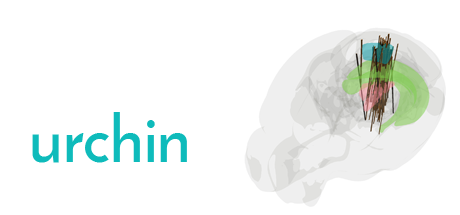Installation and Use
The Universal Renderer for Neuroscience (Urchin) allows you to connect your Python scripts to a standalone rendering program, to create neuroscience-specific interactive 3D visualizations.

Install
pip install oursin
No additional installation is required if you plan to run Urchin in a browser. A standalone desktop application is also available from the releases page. Linux standalone available on request.
Instructions
import oursin as urchin
urchin.setup()
Calling setup() opens a web browser and links it to your Python client.
Set the parameter standalone = True to connect to a standalone Desktop application. You’ll need to manually copy the ID that Urchin displays to the Desktop renderer.
Bugs
Please report issues on the issues page.
Citing
There is no citation for Urchin right now, we’ll create one soon.